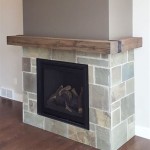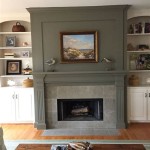Cast Iron Wood Burning Fireplace Inserts: A Comprehensive Overview
Cast iron wood burning fireplace inserts represent a significant enhancement to traditional fireplaces. These inserts are designed to transform an existing, often inefficient, masonry fireplace into a powerful and efficient heat source. They offer a combination of classic aesthetics and modern technology, providing warmth, ambiance, and cost savings. Understanding the features, benefits, and considerations associated with cast iron wood burning fireplace inserts is crucial for informed decision-making.
A fireplace insert is essentially a self-contained firebox that is installed directly into the opening of an existing fireplace. Unlike open fireplaces, which lose a considerable amount of heat through the chimney, inserts are designed to radiate heat into the room. They also prevent cold air from entering the house through the chimney when the fireplace is not in use, further contributing to energy efficiency.
Cast iron, as a material, lends itself well to fireplace insert construction due to its excellent heat retention and radiation properties. Its durability allows for a long lifespan, and its ability to be molded into intricate designs enhances the aesthetic appeal of the insert. Moreover, cast iron provides a consistent and even heat distribution, creating a comfortable and warm environment.
Key Advantages of Cast Iron Fireplace Inserts
Cast iron wood burning fireplace inserts offer several distinct advantages over both traditional open fireplaces and other types of fireplace inserts. These advantages relate to efficiency, longevity, aesthetics, and heating performance. A thorough examination of these benefits helps homeowners determine if a cast iron insert is the right choice for their heating needs and preferences.
Enhanced Heating Efficiency: One of the primary benefits of installing a cast iron wood burning fireplace insert is improved heating efficiency. Open fireplaces are notoriously inefficient, often drawing more heat out of a room than they provide. This is due to the significant amount of air that goes up the chimney, carrying heat away with it. Fireplace inserts, particularly those made of cast iron, are designed to capture and radiate a much higher percentage of the heat generated by the burning wood. This is achieved through a closed combustion system and the heat-retentive properties of cast iron. Some models also include features like blowers to further distribute the heat throughout the room, maximizing efficiency. This increased efficiency translates directly into lower heating bills and a reduced reliance on central heating systems.
Durability and Longevity: Cast iron is a remarkably durable material known for its ability to withstand high temperatures and repeated heating and cooling cycles. This inherent durability makes cast iron wood burning fireplace inserts a long-lasting investment. With proper maintenance, a cast iron insert can provide reliable heating for many years, potentially decades. The robust construction of cast iron also makes it less susceptible to damage from physical impacts, further extending its lifespan. While other materials might be lighter or less expensive, cast iron offers a level of durability that is difficult to match, making it a cost-effective choice in the long run.
Aesthetic Appeal and Design Versatility: Cast iron is a material that can be molded into a wide variety of shapes and designs. This allows for a high degree of aesthetic versatility in cast iron wood burning fireplace inserts. From traditional, ornate designs to more modern, minimalist styles, there is a cast iron insert to complement virtually any home décor. The classic look of cast iron adds a touch of elegance and sophistication to any room. Furthermore, many cast iron inserts are available in a variety of finishes, allowing homeowners to customize the appearance of the insert to perfectly match their existing fireplace surround and overall room design. The ability to blend seamlessly with the existing aesthetic is a significant advantage for homeowners who value both functionality and visual appeal.
Factors to Consider When Choosing a Cast Iron Fireplace Insert
Selecting the right cast iron wood burning fireplace insert requires careful consideration of several factors. These factors include the size of the fireplace opening, the heating needs of the space, the desired aesthetic, and budget constraints. Properly assessing these factors will ensure that the chosen insert is the right fit for the home and provides the desired level of performance and satisfaction.
Sizing and Fireplace Opening Dimensions: The dimensions of the existing fireplace opening are a critical factor in determining the appropriate size of the insert. The insert must fit comfortably within the opening while allowing for proper ventilation and clearance around the sides and top. Inserts are available in a range of sizes to accommodate different fireplace dimensions. It is essential to accurately measure the height, width, and depth of the fireplace opening before selecting an insert. Consulting with a professional installer is highly recommended to ensure that the chosen insert is the correct size and can be safely installed. An improperly sized insert can result in reduced efficiency, poor performance, and potential safety hazards.
Heating Capacity and BTU Output: The heating capacity of a fireplace insert is measured in British Thermal Units (BTUs). The appropriate BTU output for a given space depends on several factors, including the size of the room, the insulation level of the home, and the climate in which the home is located. A larger room or a home with poor insulation will require an insert with a higher BTU output to effectively heat the space. Overestimating the heating capacity can result in an uncomfortable, overheated environment, while underestimating it can lead to insufficient heating. It is advisable to consult with a heating professional to determine the appropriate BTU output for the specific heating needs of the home. Understanding the BTU rating ensures that the chosen insert will provide adequate warmth and comfort without excessive energy consumption.
Emissions and Efficiency Ratings: Modern wood burning fireplace inserts are subject to strict emissions standards set by organizations such as the Environmental Protection Agency (EPA). These standards are designed to reduce air pollution and promote cleaner burning practices. When selecting a cast iron wood burning fireplace insert, it is important to look for models that are EPA-certified and have low emissions ratings. A cleaner-burning insert not only benefits the environment but also contributes to improved indoor air quality. In addition to emissions ratings, it is also important to consider the efficiency rating of the insert. A higher efficiency rating indicates that the insert is more effective at converting wood into usable heat, resulting in lower wood consumption and reduced heating costs. Choosing an insert with both low emissions and high efficiency is a responsible and economical choice.
Maintenance and Safety Considerations
Proper maintenance is essential for ensuring the safe and efficient operation of a cast iron wood burning fireplace insert. Regular cleaning, inspection, and professional servicing will prolong the lifespan of the insert and prevent potential hazards. Adhering to safety guidelines is also crucial to protect the home and its occupants from fire risks and carbon monoxide poisoning.
Regular Cleaning and Inspection: The chimney connected to the fireplace insert should be inspected and cleaned at least once a year, or more frequently if the insert is used heavily. Creosote, a flammable byproduct of wood burning, can accumulate in the chimney and create a significant fire hazard. A professional chimney sweep can thoroughly clean the chimney and identify any potential problems, such as cracks or blockages. In addition to chimney cleaning, the insert itself should be regularly inspected for signs of damage or wear. Check for cracks in the cast iron, loose seals, and any other issues that could affect the performance or safety of the insert. Regular cleaning and inspection are proactive measures that can prevent costly repairs and ensure the ongoing safe operation of the insert.
Safe Wood Burning Practices: Burning seasoned firewood is crucial for efficient and clean combustion. Seasoned wood, which has been allowed to dry for at least six months, contains less moisture than green wood. Burning seasoned wood results in a hotter, more complete burn, producing less smoke and creosote. Avoid burning treated or painted wood, as these materials can release harmful chemicals into the air. When loading the insert with wood, avoid overloading it, as this can restrict airflow and lead to incomplete combustion. Always use a fireplace screen or door to prevent sparks from escaping into the room. Following safe wood burning practices not only improves the efficiency of the insert but also reduces the risk of fire and air pollution.
Carbon Monoxide Detection and Prevention: Carbon monoxide (CO) is a colorless, odorless gas that can be produced by incomplete combustion. It is essential to install carbon monoxide detectors in the home, particularly near sleeping areas, to provide early warning of CO buildup. Ensure that the detectors are functioning properly and test them regularly. If a CO detector alarms, evacuate the home immediately and call emergency services. Proper ventilation is also crucial to prevent CO buildup. Never block or obstruct air vents or chimney flues. Regular maintenance and adherence to safe burning practices will minimize the risk of carbon monoxide poisoning.

Napoleon Epi3 Wood Fireplace Insert Inserts By

Ventis Hei240 Wood Fireplace Insert Mace Energy Supply

M55 Cast Iron Pellet Fireplace Insert Dreifuss Fireplaces

Hi2450 Non Catalytic Cast Iron Wood Insert By Regency

Enviro M55 Fireplace Insert Top Hat Home Comfort Services

Cast Iron Wood Fireplace Inserts Made In Usa Lopi Stoves

Quadra Fire Expedition Ii Wood Insert Best

Buy Regency Package Hampton Cast Iron Pellet Insert Or In

Expedition Ii Wood Insert Forge Flame

Tpi3 1 Series Timberwolf Wood Fireplace Insert Hearth Stove Patio
Related Posts








